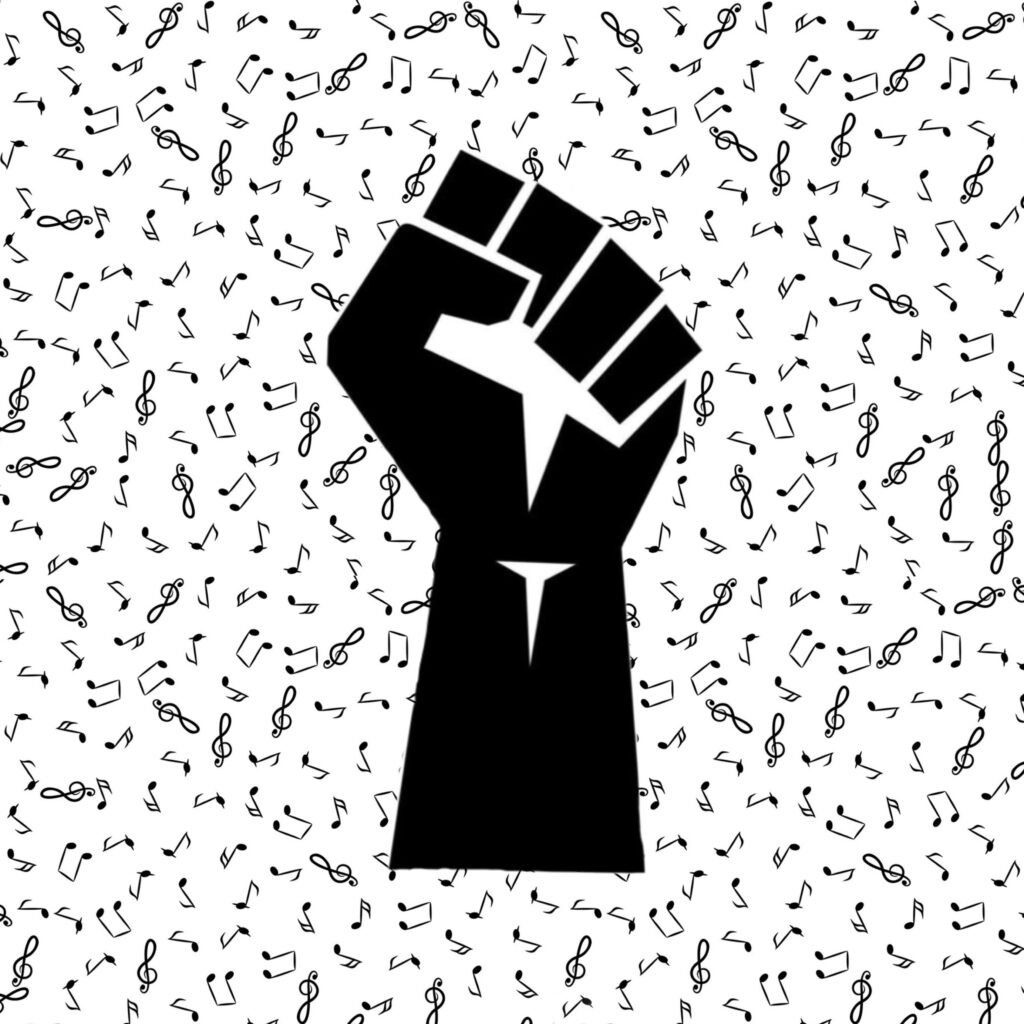Role of Music in Activism in the Arab World

By: Joud Sleilaty / Arab America Contributing Writer
Intro
In recent times, activism in the Arab world has seen a significant rise, especially since the Arab Spring. Traditional methods of activism like protests, rallies, boycotts, art, and street art, as well as chants have mostly been used to unify people over their common revolt. However, a new trend is emerging as artists create songs that appeal to diverse audiences, becoming a unifying voice in activism. This music style brings a new and lively aspect to the usual ways of protesting, making it more accessible for everyone to participate in these historic moments, regardless of age, background, gender, or identity. aMusic becomes the common thread uniting people towards shared goals.
What are the Songs About?
The songs in question might be crafted to show discontent with a specific regime or public figure through powerful chants. The dislike might be articulated explicitly by mentioning the person’s name or indirectly through subtle hints. This approach, even when subtle, is a more straightforward and risky way to protest as it directly confronts the targeted figure.
Alternatively, songs can also take the form of chants aimed at encouraging people to unite around common goals. This approach adopts a more peaceful tone, urging individuals to stand together in solidarity against shared challenges. These songs are usually addressing the people instead of the regime and are more lively and uniting. The songs are also more inclusive since they call for people to join hands not mentioning the goal they’re fighting for. Each person can interpret this song in their way and the goal is open-ended.
Finally, some songs serve as national treasures, celebrating the beauty and potential of the country. The familiarity of these tunes brings people together, fostering a profound sense of unity rooted in shared cultural heritage.
How does music bring people together:
When broadcast over the radio, the shared experience of listening to the same song in different locations fosters a collective sense of togetherness. It serves as a reminder to individuals that they are part of a broader community.
Within the context of protests, music offers a lively and peaceful means of uniting people through common chants. Harmonizing over an empowering song adds a profound dimension of unity to the demonstration, amplifying the collective voice. The music adds another layer of excitement and unity to the demonstrations which will encourage more people to attend, making a greater impact.
In the realm of social media, music can be the background of videos or photos or be shared to attract attention. Additionally, sharing posts of the protests with the chants and the music will bring people to attend these protests. This use of music contributes to a virtual gathering around a shared musical focal point, creating a sense of community even in the digital space.
What are Some Popular Songs?
One of the most known causes for protests in the Arab World is the Palestine-Israeli conflict where many songs have emerged as powerful calls for peace, amplifying the collective voice through musical expression. Notable among these is “Rajieen,” released by the American record label Empire. Translating to “returning,” this nearly eight-minute track brings together 25 Arab artists who sing and rap verses, creating a compelling musical narrative. Another significant contribution is “Hold Your Fire” which was released in 2023 by Kadim Al Sahir, an Iraqi artist who collaborated with the UN Chamber Music Society. Additionally, “Let It Rain” by MC Abdul has also gotten a lot of attention being a rap/hip-hop song released by a young Palestinian boy in California. Finally “Dammi Falastini” by Mohammed Assaf has been one of the most popular songs for the Palestinian cause since 2015.
In other Arab countries’ revolutions, some popular songs have also emerged. In Lebanon for example, “Hela Ho” has been known to circulate the streets in 2019 to specifically denounce politicians that were being criticized during the revolution. Other songs released in earlier times like “El Hak Ma Bemout” by Joseph Attieh or “Rajeh Yet Ammar Loubnan” by Zaki Nassif have also gotten a lot of attention during the revolution.
During the Arab Spring, many songs emerged to represent the collective voice of the people asking for change and justice. These musical expressions became anthems of resistance, resonating across the Arab world as citizens rallied against oppressive regimes and advocated for political reform. The power of music during this transformative period was evident as it provided a unifying platform for individuals from diverse backgrounds to come together in solidarity. One such notable song that gained prominence during the Arab Spring is “Irhal” by the Tunisian artist El General in 2010. Other songs have also been released from all countries and contributed heavily to the Arab Spring and its outcome.
Conclusion
In conclusion, music has become a dynamic force in Arab activism, particularly since the Arab Spring. Songs not only express discontent with regimes but also foster unity through chants and celebrate cultural heritage. From protests to social media, music brings people together, creating a collective sense of togetherness. Notable songs for peace in Palestine exemplify the impactful role of music in conveying messages of unity and hope. The Arab Spring, marked by its anthems underscores music’s transformative power in shaping collective voices for change and justice.
Check out Arab America’s blog here!



